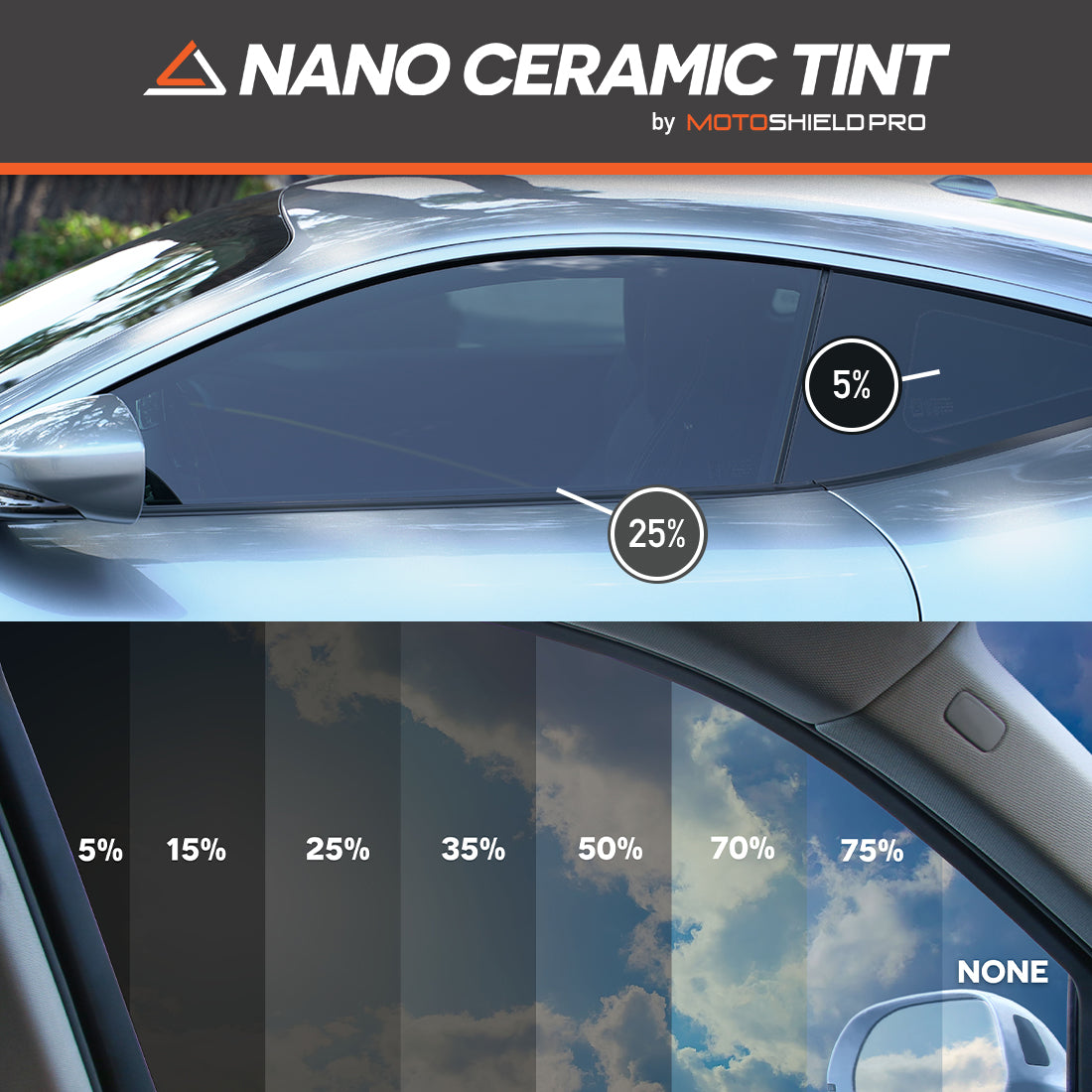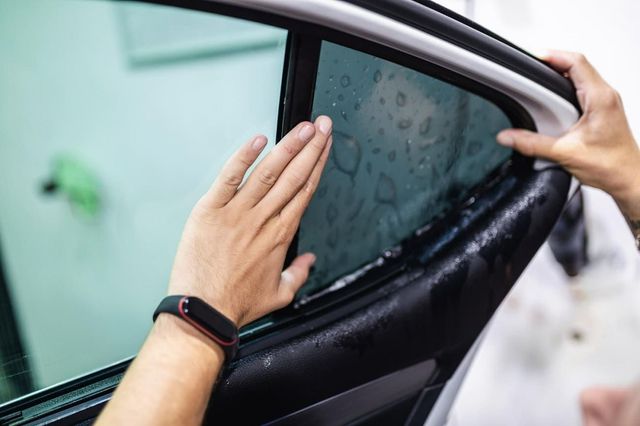Does Window Tinting Improve Your Home’s Safety? Find Out How
Wiki Article
Window Tinting Options: Find the Right Shade for Your Design and Needs
Selecting the ideal window tint for your automobile involves a mindful consideration of various aspects, consisting of personal aesthetics, functional demands, and legal limitations. With options ranging from light tintss that offer minimal privacy to darker tones that enhance seclusion, the selections can be frustrating. window tinting. Recognizing the implications of visible light transmission (VLT) portions and the advantages of various materials is critical in making an informed choice. As you consider your alternatives, you may wonder just how these aspects interplay to produce not just a look, but a customized experience when driving.Understanding Window Tinting Degrees
When thinking about window tinting, it is important to recognize the various degrees of tint available, as they substantially impact both aesthetic appeals and capability. Window tinting is categorized based upon Noticeable Light Transmission (VLT) portions, which suggest the quantity of light allowed to go through the glass. The VLT portion can range from very light (over 70%) to really dark (listed below 5%)The primary levels of tint consist of clear, which provides UV protection without altering exposure; light tint (over 50% VLT), which somewhat decreases glow while preserving presence; medium tint (around 35% VLT), striking a balance in between privacy and light transmission; and dark tint (below 20% VLT), supplying significant personal privacy and warmth decrease but limiting external visibility.
Understanding these degrees is important as they can impact driving security, legal conformity, and personal convenience. Furthermore, local guidelines frequently dictate allowable tint degrees, differing by state or municipality. As a result, before selecting a color, it is recommended to research and guarantee adherence to these regulations while taking into consideration personal preferences for design and functional advantages.
Popular Tint Tone Explained

Among one of the most prominent options is the classic dark tint, normally ranging from 20% to 5% VLT (Visible Light Transmission) This shade uses maximum privacy and a smooth, innovative appearance. It efficiently obstructs UV rays and warm, making it perfect for bright climates, though it might restrict exposure in the evening.
Conversely, lighter tones such as 35% or 50% VLT supply a much more refined appearance while still supplying some degree of personal privacy. These tones are excellent for those looking for an equilibrium in between looks and capability, as they enable for better exposure and adhere to different lawful standards.
Another emerging choice is the ceramic tint, which can come in a range of tones - window tinting. It uses remarkable warm being rejected and UV protection without considerably modifying the vehicle's appearance

Legal Laws for Window Tinting
Comprehending the lawful laws surrounding window tinting is vital for car proprietors wanting to customize their cars and trucks. Each state in the U.S. has details regulations regulating the darkness or lightness of window tintss, often gauged by Visible Light Transmission (VLT) percent. VLT describes the amount of light that can pass through the film and the glass combined.In lots of states, regulations determine different VLT percents for numerous windowss, consisting of front windscreens, side windowss, and rear windowss. Some states may enable a color of 70% VLT for windshields while permitting darker tintss for back windowss. Furthermore, certain states have limitations on reflective tintss, which can create glare for other chauffeurs.
Failure to abide with these laws can bring about fines, mandated elimination of the tint, and raised insurance coverage costs. Car owners need to speak with neighborhood laws or state DMV web sites to guarantee they are within lawful limits prior to continuing with installment. Understanding these policies not just aids avoid lawful consequences but additionally ensures a safe driving experience.
Benefits of Various Tint Materials
Exploring the benefits of numerous tint materials exposes considerable advantages that can boost both the functionality and aesthetic appeal of a car. Each material uses distinct qualities matched to details needs and choices.Dyeded window films are preferred for their affordability and capacity to decrease glow. resource Metalized films, on the other hand, deal superior warm reduction and UV defense due to their reflective homes.
Ceramic window films represent a premium alternative, giving outstanding warm being rejected while keeping visibility. They are non-metallic, thus avoiding any signal interruption, and are highly long lasting, standing up to scratches and fading gradually. Additionally, ceramic films do not have dyes, making certain a longer-lasting look.
Last but not least, hybrid films incorporate elements from dyeded and metalized options, using a balanced efficiency in regards to warmth rejection, glow decrease, and cost. Each tint product serves distinct purposes, enabling lorry owners to select the ideal suitable for their way of life and visual preferences, ultimately enhancing their driving experience.
Choosing the Right Tint for You
Locating the right window tint entails thinking about various factors, including individual choices, lorry kind, and neighborhood guidelines. Initially, examine your individual design and preferred degree of personal privacy, as these will certainly lead your option of tint shade. Darker tintss give boosted privacy yet might not appropriate for all vehicle drivers, especially those who choose an even more open feeling inside their vehicle.Next, consider your vehicle kind, as the dimension and form of windowss can affect the performance of particular tintss. For circumstances, larger windowss may take advantage of reflective tintss that lower glow while smaller windowss may be extra fit to dyeded films that offer subtle visual appeals.
Additionally, it's vital to check local guidelines relating to window tinting. Numerous states enforce limitations on the permitted darkness and reflectivity, especially for front windowss. Compliance with these laws is necessary to make sure and prevent fines security.
Finally, assess the tint material that best fits your requirements. Choices consist of dyeded, metalized, ceramic, and hybrid films, each offering special advantages connecting to warmth rejection, UV security, and toughness. By thinking about these variables, you can confidently select a window tint that aligns with your design and functional needs.
Conclusion
To conclude, selecting the suitable window tint calls for careful factor to consider of different aspects, including VLT percentages, regional policies, and the wanted aesthetic. Various tint materials provide special benefits that can improve vehicle convenience and protection. By thoroughly understanding the available choices and straightening them with individual preferences and functional requirements, one can attain an optimum balance in between design and performance in window tinting options.Picking the suitable window tint for your car involves have a peek at this website a cautious consideration of different variables, More Info including personal aesthetic appeals, practical demands, and lawful restrictions. Each state in the U.S. has particular laws controling the darkness or lightness of window tintss, usually gauged by Visible Light Transmission (VLT) percent. Some states might allow a color of 70% VLT for windshields while permitting darker tintss for rear windowss.Locating the right window tint involves thinking about different variables, including personal choices, lorry type, and neighborhood laws.In verdict, selecting the suitable window tint needs mindful consideration of different factors, consisting of VLT portions, local regulations, and the wanted aesthetic.
Report this wiki page